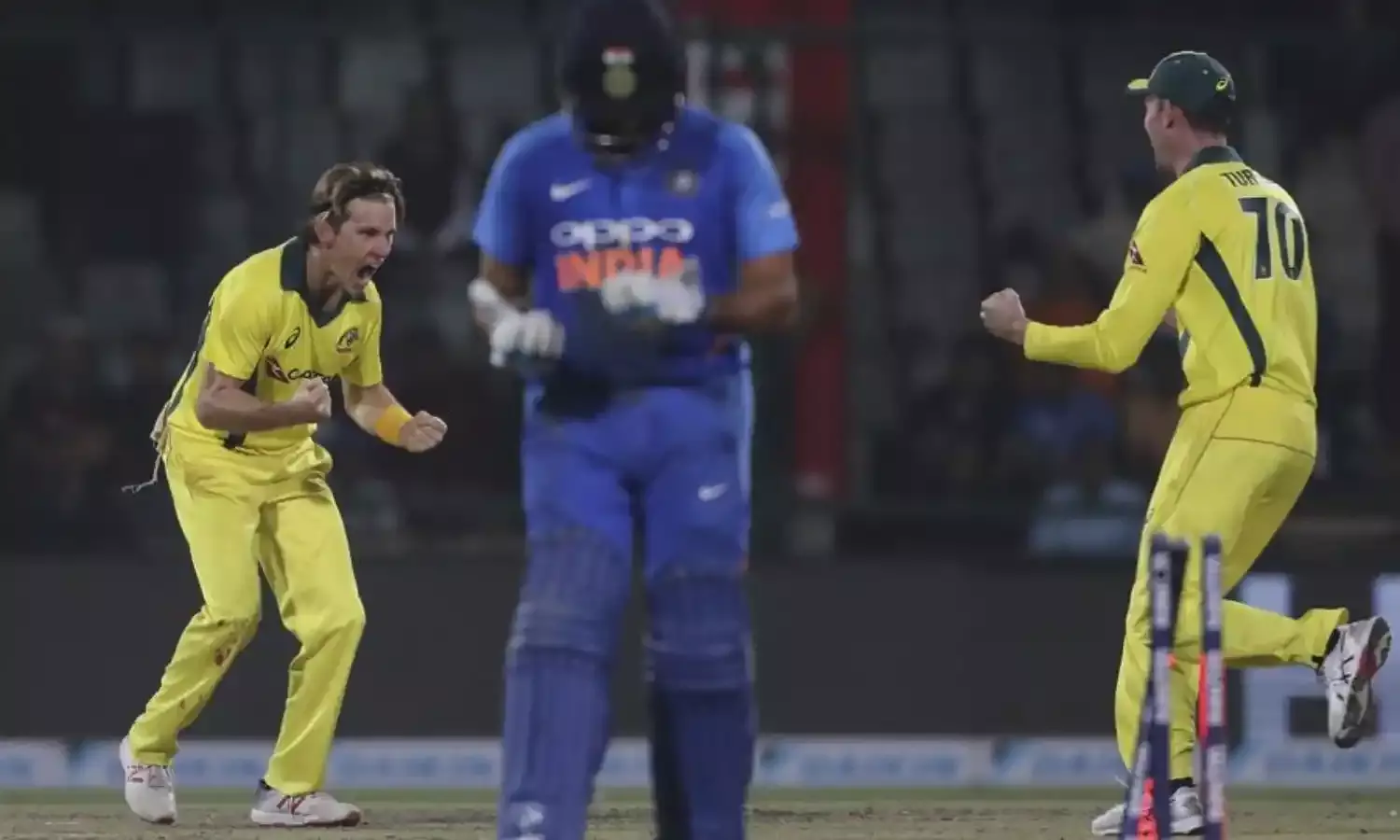India's No.4 Riddle, Who Will Make the Cut?
Only time will reveal the mystery.

The recently concluded India - Australia series provided a crystal clear picture to both the teams just before the grandest tournament in cricket – The World Cup. Australia returned from the dead and scripted history with three consecutive wins in the five-match series. For India, the series has raised more questions than answers related to their playing combination.
The high-voltage tournament is still two months away and India have already played their last ODI before the World Cup. With Indian Premier League all set to kick start next week, the Indian national team won’t be playing any ODI before the World Cup.
India’s defeat against Australia could be one exception as the high-on-confidence Indian side have been on a roll in the shorter formats, but one cannot deny the fact that India still have a loophole in their powerful line-up. In a tournament like World Cup, small weaknesses are brutally exploited and a side cannot afford to step a foot wrong in crunch situations, especially in the knockout games.
India have a well-seasoned bowling attack and have enough ammunition in their batting artillery, but the No. 4 slot in the middle-order is still tentative. Although Indian skipper Virat Kohli has said that the team is pretty certain about their combination, but the recent experiments with that slot has not earned any fruitful dividends. “As a side, combination-wise, we are pretty sorted condition-based. Maximum one change, you'll get to see condition-based. But other than that, the XI we want to play, we are pretty clear about it," Virat Kohli was quoted in a report from ESPNCricinfo.
After a tenacious 90 in the final ODI against New Zealand, Ambati Rayudu kept all questions at bay regarding the said position, but things changed at home against Australia. Rayudu failed terribly in the first three games, eventually losing his place in the playing XI. KL Rahul was roped in for the fourth ODI, but he batted at three while Kohli was demoted to 4. Again, a move that didn’t pay off. In the final encounter, the promising Rishabh Pant took guard at four but floundered after a good start.
Going by the numbers, it is clearly evident that the No. 4 slot still remains a dilemma in this batting powerhouse. With MS Dhoni being in the twilight of his career, this position becomes more crucial. Lately, Dhoni’s strike-rate has been worrisome. There is absolutely no doubt regarding his ability to anchor the innings and finish the game, but his sluggish strike-rate might create problems in a high-scoring game, or when India are chasing a total of 300 above. He likes to take his time and then brings his enormous experience into play, which means the No. 4 batsman needs to keep up with the run-rate.
Since the 2015 World Cup, India have experimented with 12 players in the No. 4 slot. Rayudu got the most number of games, he did get crucial runs under his belt, but the Australian series exposed his weaknesses brutally. MS Dhoni at four is another tempting option, he has a good record while batting at that position but he is not the same player he used to be a few years ago. Hardik Pandya will be playing the finisher’s role with Kedar Jadhav in the middle. Pant just got a solitary game and it is unlikely that India would be gambling with him in the tournament.
Karthik got decent number of opportunities but his failure to garner crucial runs didn’t help him cement his spot in the line-up. KL Rahul’s recent form has been ordinary while it is very difficult to imagine Kohli batting at four. Other players like Rahane, Yuvraj, Tiwary and Pandey are mot in the scheme of things for the World Cup.
As of now, it looks like the race is between Vijay Shankar, Karthik, Rayudu, Pant and KL Rahul. Rayudu’s performances against dominating bowling attacks have been mediocre. It will be interesting to see who gets a nod. India’s top-order has been breathing fire and has got the job done on a consistent basis, which has avoided the pressure on the middle-order. But a team cannot afford to bank completely on the top-order to bail them out on a regular basis. Although India’s middle-order has done well, but consistency is what they seek the most.
The series against Australia exposed India’s small weaknesses and gave a reality check just at the right time. With no matches scheduled before the World Cup, one can expect team India to not tinker a lot with their combinations. Vijay Shankar impressed with his ability to rotate the strike and is capable of playing the big shots to break the shackles. He has the ingredients to excel and a good game sense as well. He just needs to avoid taking unnecessary risks and play risk-free cricket.
One shouldn’t be surprised if the lanky all-rounder is given the No. 4 responsibility in the tournament. Shankar has impressed with his water-tight technique and control while executing the strokes. Apart from his batting, he can also be handy as a medium-pacer. Too small a sample size to judge him, but the signs is promising. He played all the five games against Australia and had a golden opportunity to silent the critics in the final ODI, where he floundered for 16 while batting at 5.
Will Vijay Shankar make the cut? Will India invest in a less experienced batsman on the grandest stage of ODI cricket? Or they will stick with Rayudu at 4? Will the IPL have a huge role to play in addressing this No. 4 issue? As of now, Shankar has made his presence unavoidable and is certainly little ahead in this race.



